- How Much Weight Can You Realistically Lose in 3 Months? - January 14, 2024
- How To Lose 1kg a Week (Guaranteed) - August 20, 2023
- How To Count Calories (or Estimate) and Stay on Track When Eating Out at Restaurants - July 25, 2023
WHAT IS A CALORIE DEFICIT?
A calorie deficit is a state where you’re taking in fewer calories than you burn, over a given period of time.
So, if on a given day you burned 3000 calories, but only ate 2000 calories, you’d be a calorie deficit of 1000 calories. The bigger deficit you’re in, and the longer you maintain that deficit, the more weight you’ll lose.
When we say ‘burn’, we don’t just mean through ‘formal’ exercise (e.g. running/cycling), we mean your total TDEE (Total Energy Expenditure), which is made up of several factors.
These factors are;
- Your RMR (Resting Metabolic rate) i.e. how many calories you’d burn if you just laid down all day N.B. this is also known as BMR (Basal Metabolic Rate)
- Your Formal Exercise, i.e. how many calories you burn through formal exercise like lifting weights or running
- NEAT (Non-Exercise Activity Thermogenesis) – how many calories you burn through stuff like walking around, fidgeting, or doing the housework
- TEF (Thermic Effect of Food) – how many calories you burn through the digestion of food. Some food takes more calories to digest than others, for example, protein requires more effort to digest than fat
The sum of these four aspects will determine the total amount of calories you burn each day
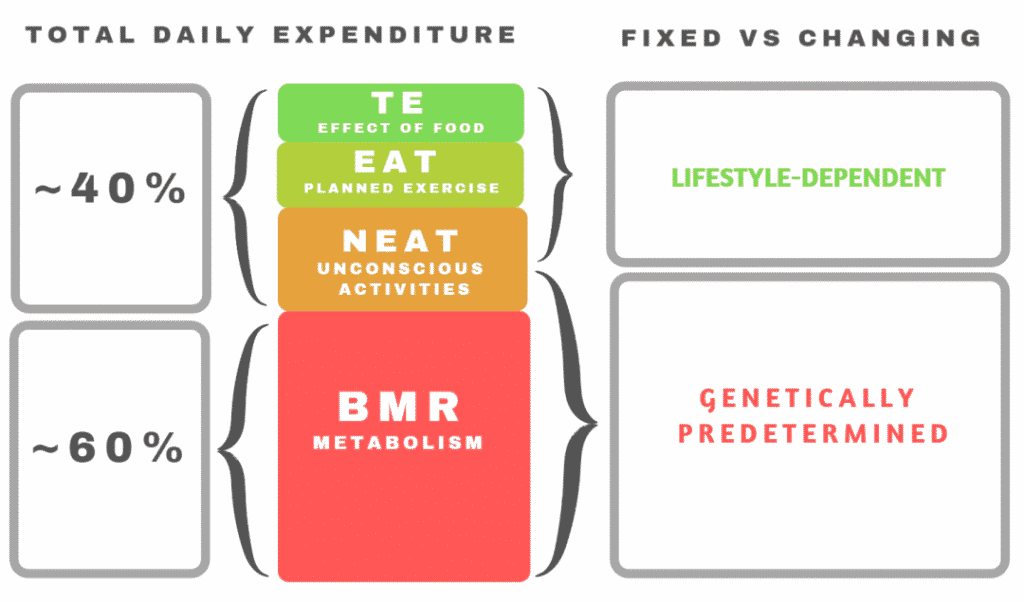
HOW DOES A CALORIE DEFICIT WORK?
A calorie deficit is founded on the basic law of thermodynamics – this is the theory that energy cannot be created or destroyed, but that it can only change form.
As this 2012 Study states, human physiology complies with this law.
When applied to weight loss, this means that when you consume energy (food) it either has to be stored (as fat or muscle) or used (through simply existing or exercising), that energy can’t just disappear.
This 2004 study states that;
“A review of simple thermodynamic principles shows that weight change on isocaloric diets is not expected to be independent of path (metabolism of macronutrients)”
Feinman, 2004
This means that regardless of how slow or fast your metabolism is, or exactly what foods you eat (protein carbs, fat), the laws of thermodynamics still apply, and therefore a calorie deficit is still required to lose weight.
Basically, if you use more calories than you eat over a given period of time, you will lose weight.
Let’s take a look at a real-world example;
If you burned 3,000 calories, but only fed your body 2,000, the energy for that other 1,000 has to come from somewhere – of course, the desire for most people will be that this 1,000 calories will come from body fat, and the likelihood is that most of it will, but some may come from muscle.
What does a 1,000 calorie deficit in a day actually mean for weight loss?
Well, if you were in a 1000 calorie deficit every day, it would take 3.5 days to burn 1lb of fat (or 7.7 days to burn 1kg of fat). This is because 1lb of fat contains 3,500 calories (1kg of fat contains 7,700 calories).
If you want to lose more weight, you simply increase the size of the calorie deficit.
Let’s say you wanted to lose 10lbs (4.5kg) of body fat. That means creating a calorie deficit of 35,000.
If you wanted to do that over a 3 month period that would mean an average daily calorie deficit of 389 calories.
If you currently maintain your weight on 2,000 calories, that would mean that you need to eat an average of 1,611 calories per day for 3 months.
Simple maths.
Except we’re talking about the biochemistry of the human body, psychology, and behavior so it’s not always quite as simple as calories in, calories out in real-world situations..
IS 3,500 CALORIES REALLY EQUAL TO 1LB OF FAT?
Yes,
But calories in do affect calories out – so although you might assume you’re in a deficit of 389 calories per day (using the example above), you may not be.
When you drop your calories, your activity levels will subconsciously drop – this is because your body notices a decrease in energy intake, and so will dop energy expenditure to compensate. This may be small stuff like fidgeting, stretching or walking around the house, but it all adds up over time.
Let’s take a look at an example of how energy intake can affect energy output.
We’ll use a completely made-up person – this is Anne, 42 from London. Anne maintains her weight on 2000 calories and decides to start dieting on week 4.
| Average Daily Energy Intake (calories) | Average Daily Energy Output (calories) | Size of Deficit | |
| Week 1 | 2000 | 2000 | 0 |
| Week 2 | 2000 | 2000 | 0 |
| Week 3 | 2000 | 2000 | 0 |
| Week 4 (start of diet) | 1800 | 2000 | -200 |
| Week 5 | 1800 | 2000 | -200 |
| Week 6 | 1600 | 2000 | -400 |
| Week 7 | 1600 | 2000 | -400 |
| Week 8 | 1600 | 1900 | -300 |
| Week 9 | 1600 | 1900 | -300 |
| Week 10 | 1600 | 1800 | -200 |
| Week 11 | 1600 | 1800 | -200 |
| Week 12 | 1600 | 1700 | -100 |
In this example, you can see that Anne reduces her calorie intake to 1800 calories at the start of her diet, creating a 200 calorie deficit, in week 6, she reduces it by a further 200 calories, creating an even bigger deficit (400 calories).
But there’s a plot twist, in week 8, her average daily energy output falls by 100 calories, meaning the size of the deficit is reduced.
A deficit still exists, so weight loss will still happen, but it’s smaller than before, so the weight loss will happen at a slower rate.
The graph below represents this in a more visual way – the yellow line (size of the deficit) reduces as the energy output reduces (red line) BECAUSE energy intake has been reduced (blue line).
All of this means that weight loss isn’t necessarily a linear, predictable process because there are so many moving parts.
You can do all of the calculations in the world, but your body may not respond to a certain amount of calories the way you suspect.
Does this mean that trying to calculate a calorie deficit is pointless?
Absolutely not – but it does mean that you can’t just set a target, stick to it and expect a consistent level of weight loss, you need to continually track and monitor your progress so you know when to adjust your calorie intake based on your rate of weight loss.
Anyone can do this themselves with a bit of hard work and patience, but hiring a weight loss coach will make the process a lot easier.
CALCULATING MAINTENANCE CALORIES
So now we’re armed with the knowledge of what a calorie deficit actually is and how it works, how can we go about actually creating a calorie deficit?
The first step is to work out your maintenance calories, otherwise known as our TDEE or total daily energy expenditure.
There are many different ways to do this and while some people may claim that one is the most accurate, none of them can be 100%, so be aware whatever method you use will be an estimate.
If you want a free e-book guide for calculating maintenance calories, stick your email below and I’ll send you one.
HOW TO CREATE A CALORIE DEFICIT
Once you’ve got your maintenance calories (remember this is an ESTIMATE), you can then go and set a calorie target for yourself.
This should be based on two things;
- How Much Weight You Want to Lose
- How Quickly you want to lose it
Let’s say you want to lose 10lbs (4.5kg). You then need to establish how quickly you want to lose it
As we established above, 10lbs of weight requires a 35,000 calorie deficit (in theory), so the sooner you want to lose it, the more aggressive your diet would need to be.
Let’s also assume our maintenance calories are 2000 per day.
Here’s how many calories you’d need to eat per day on average to lose 10lbs across different timeframes
| Timeframe | Required Daily Calorie Intake |
| 1 month | 333 |
| 2 months | 1417 |
| 3 months | 1611 |
| 4 months | 1708 |
| 5 months | 1767 |
| 6 months | 1806 |
Clearly, as the timeframe increases, the severity of the required deficit reduces.
Which timeframe should you pick? It depends on how aggressive you’re prepared to go with calories, and what your willpower is like.
I certainly wouldn’t recommend that ANYONE try to lose 10lbs in a month; sticking to 333 calories every day simply won’t be sustainable.
The more calories you give yourself, the easier it’ll be to stick to, so I’d recommend trying to strike a balance between speed and sustainability – sustainability will always trump speed, however.
Why?
Well, if you can’t stick to your target calories, you likely won’t end up losing any weight. Better to take things slow and get the result rather than rush, and give up because it’s too difficult.
If you’d rather just use a calculator to work out what your deficit should be, try this one;
DO YOU HAVE TO COUNT CALORIES?
No.
You don’t HAVE to count calories to be a deficit. But regardless of whether you do count calories, calories still count.
The reason that counting calories is a great idea is that it gives you more certainty that you are in a deficit, meaning you’re safe in the knowledge that you’re leaving no stone unturned.
On the other hand, you may simply HATE the thought of tracking everything you eat and drink (it’s really not that difficult), so if you want to lose weight, but calorie counting is something you categorically DON’T want to do, then you don’t have to.
Of course, the beauty of counting calories is that you can pretty much be in the mindset that you can eat whatever you like, within reason, so long as you’re hitting your calorie goal.
If you DON’T count calories, you need to put a lot more rules and structure in place to make it as likely as possible that you’re going to be in a deficit.
These rules might be;
- Prioritise Low Calorie Dense, High Volume Foods
These are foods that weigh a lot (so they’ll fill you up), but contain relatively low calories (so it’s more likely you’ll be in a deficit. These include vegetables (how did you guess?), fruit, lean proteins (chicken, turkey, white fish, lean red meats) and low-fat dairy (cottage cheese, milk, yoghurt). You can find more on low calorie-dense foods here.
2. Intermittent Fast
Intermittent fasting is just a fancy way to say ‘skip a meal’. Most intermittent fasting protocols dictate that you eat in a 16:8 pattern, this means only eating within an 8-hour window.
For most people, the most convenient time to do this is between 12 midday and 8 pm; this is essentially the same thing as skipping breakfast and means that if you usually have 500 calories at breakfast, you’ll be having 500 calories fewer per day. i.e. you’ll be in a 500 calorie deficit.
Of course, the trick is to ensure that you don’t get so hungry that you eat an additional 500 calories later in the day!
3. Walk More
In my opinion, walking is the best form of exercise if weight loss is the goal.
Why?
Because it’s easy to do consistently.
Yes HIIT burns more calories in the same time frame, but how many times per week are you going to be motivated to do it? And for how long for, a few weeks? A few months? You can walk pretty much everyday for the rest of your life!
How many steps you should do daily to lose weight depends on how much you’re eating, but I’d start by doing a consistent number each week, then you can adjust from there if you’re not losing weight at the rate you want.
4. Eat More Protein
Protein is kind of magic.
It helps build and maintain muscle (trust me, you want more muscle).
It helps keep you fuller than foods that are predominantly carbohydrate or fat.
Best of all, you actually burn more calories digesting protein than you do digesting carbs or fat. This means that the higher proportion of your diet is made up of protein, the fewer calories you’ll store as fat.
5. Avoid High-Calorie Dense Foods
This is basically the opposite of point #1.
Avoid foods that contain a lot of calories for very little weight. Examples of these types of foods are Butter, oils, peanut butter, nuts, Nutella, and full-fat dairy like cheese and cream (or anything cream or oil-based like Mayonnaise for example).
Foods like this will take up very little room on your stomach (so they won’t fill you up) but contain a LOT of calories.
THE PROS AND CONS OF COUNTING CALORIES
So, should you count calories or not?
Often the answer isn’t clear cut, so lets’ look at the pros and cons;
PROS
- You can eat in an ‘IIFYM’ style, i.e. eat pretty much whatever you want, as long as it fits with your calories
- It’s very liberating; you don’t have to worry anymore about certain foods being ‘bad’ or ‘good’, each food has a calorie value and that’s that
- You’ll educate yourself about calories, so at some point you’ll be able to eat intuitively, knowing the rough calorie content of most popular foods as you can just manage your weight ‘on the fly’
CONS
- When you start out, it can be time consuming to learn how to use My Fitness Pal
- It can detract you from eating nutrient dense foods; if you’re just hitting a target, and you can do that with low nutrient density foods like cakes, candy, cereal chips and crisps then you probably will
- It can lead to obsessive behaviours that disrupt your lifestyle e.g. skipping social events because you’ve already hit your calorie target for that day
CAN YOU EXERCISE MORE INSTEAD OF REDUING CALORIES?
Yes.
How you achieve your deficit doesn’t matter– you don’t even need to reduce your calorie intake at all if you don’t want to.
Eating 500 fewer calories per day, in theory, produces the exact same outcome as doing an additional 500 calories of exercise per day.
In fact, this 2007 study split 20 subjects into two groups that both achieved a calorie deficit through either calorie reduction or a combination of calorie reduction and aerobic exercise. The study found that there was no significant difference in body composition between the two groups.
The more important question is; should you exercise more instead of cutting calories?
In my opinion, no.
Why?
Because simply reducing calories takes a LOT less effort than doing more exercise. Think about it, burning an extra 500 calories probably means running for around 40 minutes, or walking for over an hour, but you could get the same effect by just cutting 500 calories out of your daily intake.
Cutting calories takes zero time and also costs nothing, meaning it’s a much more efficient way to create a deficit than doing more exercise.
Furthermore, this 2011 study states that;
“[there is] little evidence of the more physically active members of a population gaining less excess weight than those who are the least physically active”Cook and Schoeller, 2011
So while physical activity is a ton of physiological and mental benefits, it’s not necessarily the best tool for weight loss, and on the whole, people with higher activity levels aren’t necessarily lighter than less active people.
Of course, if your calories are already low then taking them down even further might not be viable, but most people’s calories aren’t low in the first place!
You can of course combine both increased activity AND reduced calories which would work perfectly well for most people.
WHAT’S A HEALTHY CALORIE DEFICIT?
For most people, a calorie deficit of between 500–1000 calories per day is perfectly healthy, provided you’re not already a healthy weight (or underweight) and that the deficit isn’t sustained for extended periods of time.
This is a blanket rule, but the real answer is a little more nuanced…
Getting into a calorie deficit consistently, over a long period of time is the key underlying principle of fat loss.
That means it’s impossible to lose fat if you’re not in a calorie deficit, regardless of what you do or don’t eat (that’s right, Keto only ‘works’ if you’re in a calorie deficit).
The problem is, as soon as people hear about this, they’ll start eating 500 calories a day.
Will that put you in a deficit? Yes, almost definitely (unless you’re a very small, light child)
But is that a healthy deficit?
No.
If you’re not eating in a healthy, sustainable deficit, you’ll end up hungry, lacking in energy, demotivated, and after a couple of weeks, you’ll quit and go back to what you were doing before, and then again back of the weight you lost.
You’ll convince yourself that a calorie deficit doesn’t work and go back to yo-yo dieting and perpetually spinning your wheels when it comes to weight loss.
But is being in a calorie deficit healthy?
IS A CALORIE DEFICIT HEALTHY?
This depending on your current weight and how big of a calorie deficit you choose to undertake, but let’s look at this question in relation to different categories on the BMI scale (yes, the BMI scale isn’t the best measure of what’s healthy or not because it doesn’t take muscle to fat ratio into account, but it gives us some broad guidelines to work from).
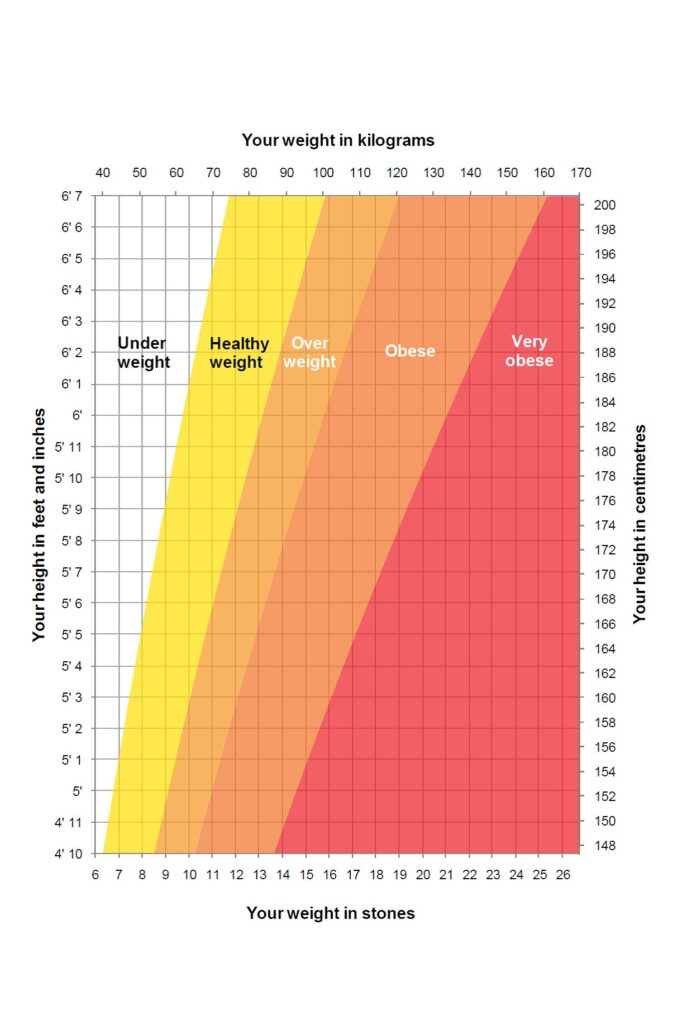
UNDERWEIGHT: For people who are underweight, a calorie deficit is likely neither healthy or necessary
HEALTHY WEIGHT: People who are at a healthy weight might choose to be in a deficit to lose a small amount of weight, but the deficit should be conservative (maximum of a 500 calorie deficit per day).
OVERWEIGHT: Of course if you’re overweight then it’s probably a good idea to get yourself into a calorie deficit so you can start to work towards being a healthy weight. For these people, I’d recommend around a 1000 calorie deficit per day.
OBESE: it goes without saying that if you’re obese, your health depends on you being in a calorie deficit, in fact, NOT being in a calorie deficit would be unhealthy for this group. For anyone in this group, I’d recommend a calorie deficit of over 1,000 calories per day.
So yes, in the right context a calorie deficit can be healthy, but whether or not you should be in a calorie deficit really depends on the individual and their specific situation.
HOW MUCH WEIGHT LOSS WILL EACH CALORIE DEFICIT LEVEL PROVIDE?
Bigger calories deficits mean more weight loss.
If you’re in a large deficit for a long period of time, then you’ll lose more weight, more quickly.
Smaller deficits and shorter periods of time spent in that deficit will produce slower, smaller amounts of weight loss.
This is how much you could technically expect to lose with different sizes of deficit.
| DAILY CALORIE DEFICIT | WEEKLY CALORIE DEFICIT | ESTIMATED WEEKLY WEIGHT LOSS (Kg) | ESTIMATED MONTHLY WEIGHT LOSS (Kg) | ESTIMATED WEEKLY WEIGHT LOSS (Lb) | ESTIMATED MONTHLY WEIGHT LOSS (Lb) |
| 100 | 700 | 0.1 | 0.4 | 0.2 | 0.8 |
| 250 | 1750 | 0.2 | 0.8 | 0.5 | 2 |
| 500 | 3500 | 0.5 | 2 | 1 | 4 |
| 750 | 5250 | 0.7 | 2.8 | 1.5 | 6 |
| 1000 | 7000 | 0.9 | 3.6 | 2 | 8 |
| 1250 | 8750 | 1.1 | 4.4 | 2.5 | 10 |
| 1500 | 10500 | 1.4 | 5.6 | 3 | 12 |
SO WHAT IS A HEALTHY CALORIE DEFICIT FOR WEIGHT LOSS?
Again, this really depends on a lot of factors and comes down to what you want to achieve and how quickly you want to achieve it, but as mentioned earlier, somewhere between a 500–1000 calorie deficit per day is going to be ideal for most people
This will produce roughly 1-2lbs or 0.5-1kg of weight loss per week.
So, if you currently weigh 90kg and you want to lose 10kg, a deficit of 500 calories per day will get you to your target weight in around 20 weeks (5 months), a deficit of 1000 calories per day will get you to your target weight within 10 weeks (2.5 months).
In reality, you should probably aim for the longer-term end of the scale because weight loss is never plain sailing and is a little more nuanced than a simple mathematical equation.
Life events like holidays, weddings, work parties, meals out, and drinks with friends will inevitably mean that you’ll be in a calorie surplus, or at least at maintenance for periods of time, which will mean your desired level of weight loss will take longer to achieve.
For this reason. It’s important not to put too much pressure on yourself and aim for a more conservative time period to get the weight off
WHAT ARE THE RISKS OF A LARGE DEFICIT?
I mentioned earlier that very large deficits (1,500+ calories per week) are going to be mentally tough to maintain because of the high levels of restriction and the resultant hunger.
Many people believe however that there is a physiological process that occurs when a large deficit is in a place called ‘starvation mode. The theory is that to compensate for a lack of calories the body will slow down your metabolism and weight loss will stop (some people even believe you’ll gain weight).
Starvation mode is a myth. As you lose weight metabolism will decrease, but this is a natural and gradual process – a smaller body needs fewer calories to keep itself alive and move around so of course metabolism will reduce.
So while this shouldn’t be a concern, large calorie deficits may result in general lethargy, tiredness, an inability to exercise effectively, and an inability to focus mentally.
All of this will of course impact your adherence to a diet, and if you can’t adhere, you won’t lose any weight, so stick to a moderate deficit!
Aside from the mental struggle, however, large calorie deficits can be physically damaging. Some of the risks include;
1. A DECREASE IN MUSCLE MASS
Extreme, fast weight loss can mean losing substantial muscle tissue as well as fat. This is something that will have a material impact on metabolism, independent of total body weight.
If you two people of the same bodyweight, one with more muscle; the one with more muscle will generally have a higher metabolism.
Muscle tissue = good.
Do everything you can to eat least preserve muscle tissue, one of those things being losing weight slowly
2. AN INABILITY TO TRAIN PROPERLY
Whether you do cardio or lift weights, getting the most out of your training will be very difficult if you’re on very low calories.
Dropping your calories is the most powerful tool in your weight loss arsenal, but exercise can help too, so make sure you’re sufficiently fulled to train optimally
3. POTENTIAL NUTRIENT DEFICIENCIES
The less food you eat, the less chance you have to get all the macro and micronutrients you need for optimal health. You can of course eat a nutrient-rich diet on low calories, but it’s tricky.
Regardless of how many calories you’re, you need to ensure you get a good balance of protein, carbs, and fat as well as a broad range of vitamins and minerals.
HOW MUCH OF A CALORIE DEFICIT IS TOO MUCH?
As a general rule, I wouldn’t recommend a larger deficit than 1000 per day. This would mean a 7000 calorie deficit per week which is roughly equal to 2lbs (1kg) of weight loss. Many of my clients have been able to maintain this for several weeks but the more you lose, the more difficult it gets to lose more. A more manageable deficit is around 500 per week which equates to roughly 0.5kg per week.
The degree of the calorie deficit any one person can handle however is highly dependant on the person and their lifestyle. Those with a busy life may find a large calorie deficit difficult to maintain for a long period of time. Others that have very little else to focus on may find it easier.
If your rate of weight loss does slow down, this isn’t because you’ve gone to ‘starvation mode’ – this is a myth. What is actually happening is metabolic adaptation; your new lighter body requires fewer calories to keep itself alive than before, and therefore fewer calories to lose more weight.
If you do hit a plateau, the best thing to do is take a diet break so you’re at maintenance calories for a week or so. This will allow your satiety hormone (leptin) to return to normal, and stabilise your metabolic rate somewhat, it also provides a psychological break, allowing you to go all-in again.
CAN YOU EAT WHATEVER YOU WANT ON A CALORIE DEFICIT?
The short answer is yes, you can.
The caveat is, if you eat in an IIFYM style, (i.e. filling up your calorie target with donuts, cakes, chocolate and candy), you’re probably not going to feel great, especially if you train at the gym or play sport.
You’re probably also not going to be that healthy because you won’t be getting a wide enough range of vitamins and minerals.
For most people, the best approach is a balanced one, with a diet consisting of 75% low-calorie dense foods (food that contains a lot of volume or weight, for relatively few calories) and 25% higher calorie-dense foods (or what people might call ‘junk’).
The higher calorie-dense food IS important though, we ALL like high fat, high sugar foods, so allowing yourself some of this will help keep you on track.
HOW DO YOU STICK TO A CALORIE DEFICIT LONG TERM?
As you can see above, the math around creating a calorie deficit is quite simple, the difficult part is creating that calorie deficit in a sustainable way, i.e. in a way that fits into your lifestyle and you can stick to for a long time.
There are many well-known diets out there that help you create a calorie deficit and lose weight. The problem is, most of these diets are NOT sustainable.
Let’s look a couple of examples;
Weight Watchers
Weight Watchers is a dieting ‘club’ in the UK with an in-person community aspect and ‘leaders’ that will conduct weekly weigh-in sessions. This is highly motivating for many, and I personally know lots of people that have lost weight during their membership.
But what happens when you stop your membership? Weight Watchers assign ‘syn’ values to food that are essentially made up (as opposed to just focusing on calories, which are real). You don’t know how to eat in a way that maintains your weight, so you’ll most likely put it all back on.
Keto
This is a method of dieting that bans pretty much all carbs.
And guess what? It works for a lot of people.
Why?
Because carbs make up a large part of most people’s daily calories (fruit, bread, rice, pasta etc), if you get rid of them, you eliminate a lot of calories so you’ll lose weight.
But this is because of the CALORIE reduction rather than the CARB reduction. If you reduced fat or protein you’d see similar results.
So what happens when you stop doing Keto? You regain all of the weight you lost because you don’t know how to maintain your weight while eating carbs.
And let’s be realistic, NO ONE is going to stop eating carbs for the rest of their life.
So, how can you create a calorie deficit, that will help you lose and MAINTAIN your weight in a sustainable (i.e. you can do it forever) way?
Weekly rather than daily calorie targets
Having a calorie target will give you something to aim for, but daily targets can be quite restrictive – if you go over your calories one day you might feel like you’ve screwed up your diet and give up.
This is why weekly targets are much easier to stick to. Look at the two examples below, which looks more like a ‘normal’ lifestyle;
Daily Targets:
| Day | Monday | Tuesday | Wednesday | Thursday | Friday | Saturday | Sunday |
| Calories | 2000 | 2000 | 2000 | 2000 | 2000 | 2000 | 2000 |
Weekly Targets:
| Day | Monday | Tuesday | Wednesday | Thursday | Friday | Saturday | Sunday |
| Calories | 2000 | 1000 | 1000 | 2000 | 2000 | 4000 | 2000 |
Both examples have a total of 14,000 calories taken in throughout the week, but the person with weekly targets has much more flexibility, which allows them to up their intake on Saturday to account for a takeaway and drinks (for example).
Food Volume
Just eating ‘what you want’ while sticking to a prescribed amount of calories sounds great – and it can be as long as you ensure you’re eating a way that will make you feel full and energized enough to go about your life.
While you theoretically CAN lose weight just by eating chocolate and cake and cheese, I wouldn’t recommend it.
Why?
Those foods won’t fill you up, and if you’re hungry all the time, you’re going to feel like trash.
You’re far better off prioritizing low calorie dense foods – i.e. food that weighs a significant amount, but doesn’t contain a lot of calories, this means it’ll take up room in your gut and make you feel full and satisfied.
Great examples of these foods are vegetables, fruits, beans/legumes, yogurts, and lean meats like chicken, turkey, certain cuts of pork and white fish. Here’s a list of some low-calorie-dense foods (the nearer the top of the list, the lower the calorie density).
Prioritise Protein
Protein is the most important macronutrient in your diet.
This is because it helps to maintain and/or build muscle, helps you feel fuller, has a high thermic effect (it takes more calories to digest) and it contains (depending on the source) many other beneficial micronutrients.
You should look to base each of your meals around a protein source. E.g.
Breakfast – Eggs or Yogurt
Lunch – Deli meats like sliced turkey or ham
Dinner – Chicken, Steak, Pork, Salmon, White Fish etc
Snacks – Jerky, Protein Bars, Boiled Eggs, Milk
Aim to get at least 1.5g of protein per kg of bodyweight. This means that if you weigh 80kg, you should aim for a minimum of 120g of protein per day
SUMMARY
A calorie deficit is NOT the best way to lose weight, it’s the ONLY way to lose weight.
This 2018 study confirms that while low carb, low fat, high protein diets, and intermittent fasting all CAN work for weight loss, the best approach is simply a reduction in calories within the contect of a ‘normal’ diet.
“Conventional hypocaloric diets are safe, healthy, and modestly effective“
Koliaki et al, 2018
You’ll never be able to calculate exactly how many calories you should be eating for weight loss, but you do at least need something to aim for.
Once you have that, you can track your calories, activity, and weight every day. This will tell you if the amount of calories you’re eating is low enough to produce weight loss, or whether you need to lower it some more.
Remember to eat in a way that means you’ll feel full and satisfied while leaving room for the odd treat here and there.
It’s simple, but not easy.
REFRENCES
Energy balance and its components: implications for body weight regulation: https://www.ncbi.nlm.nih.gov/pmc/articles/PMC3302369/
“A calorie is a calorie” violates the second law of thermodynamics: https://www.ncbi.nlm.nih.gov/pmc/articles/PMC506782/
Fat loss depends on energy deficit only, independently of the method for weight loss: https://pubmed.ncbi.nlm.nih.gov/18025815/
Defining the Optimal Dietary Approach for Safe, Effective and Sustainable Weight Loss in Overweight and Obese Adults: https://www.ncbi.nlm.nih.gov/pmc/articles/PMC6163457/
Physical activity and weight control: conflicting findings: https://pubmed.ncbi.nlm.nih.gov/21832897/
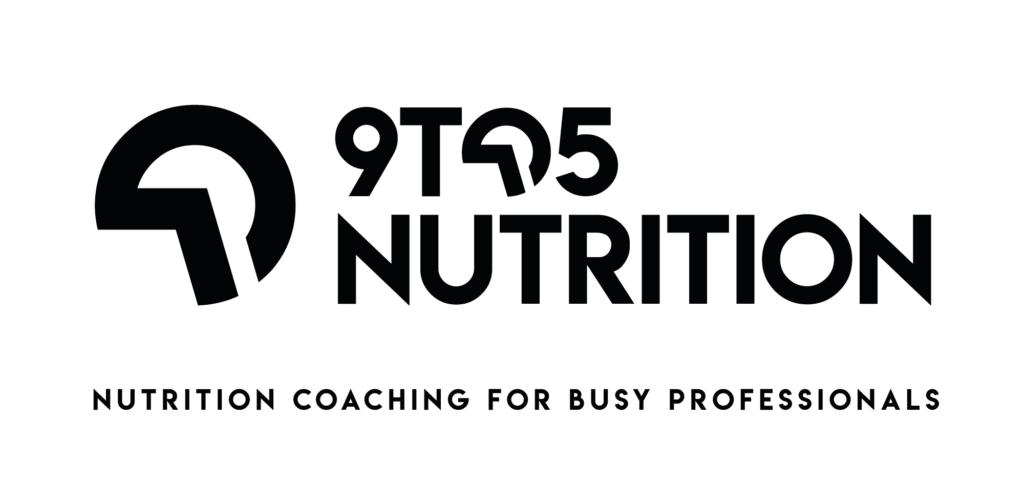
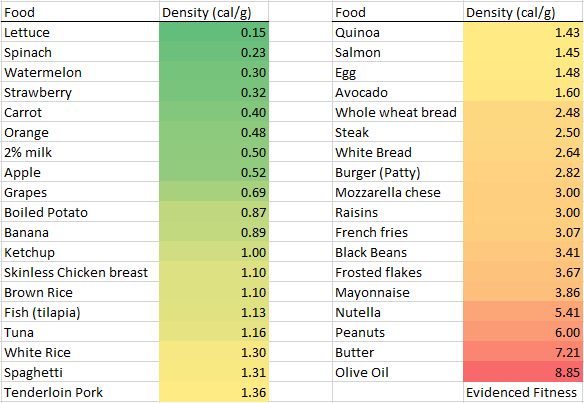
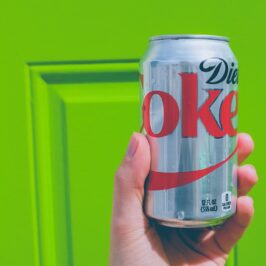
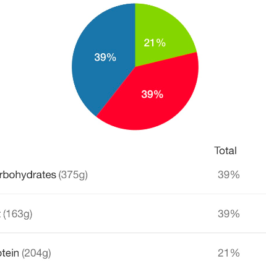
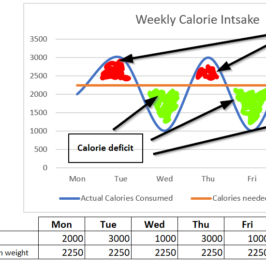

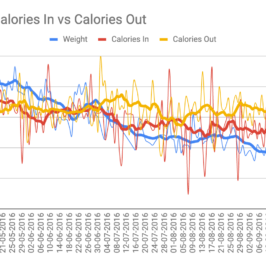

Leave a Reply